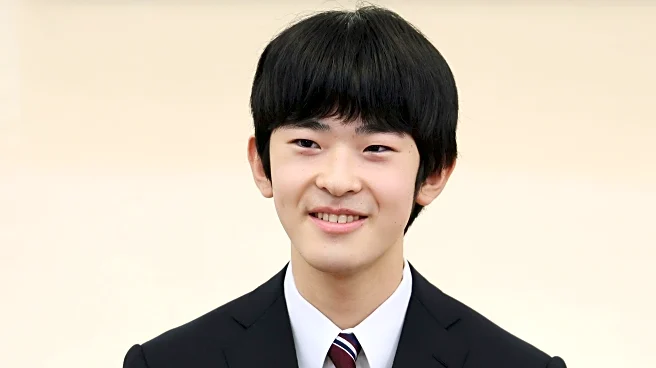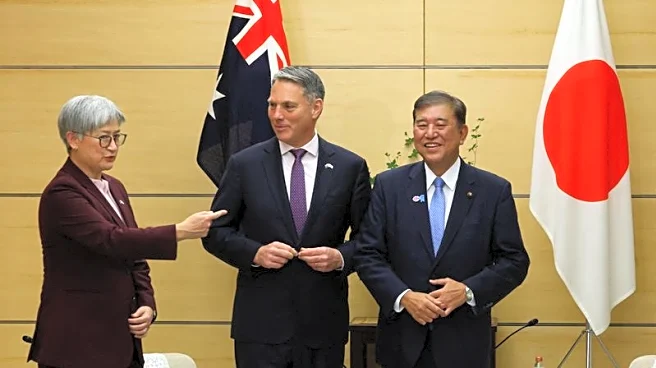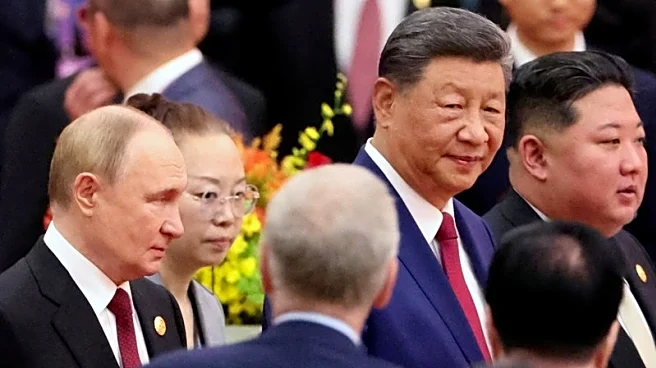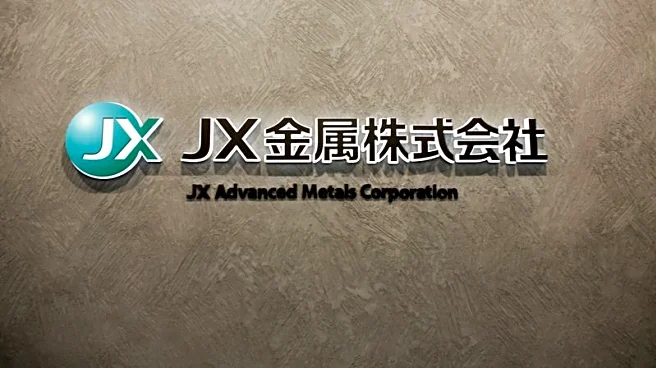What's Happening?
Japan celebrated Prince Hisahito's coming-of-age ceremony at the Imperial Palace, underscoring the country's ongoing succession crisis. The 19-year-old prince, nephew of Emperor Naruhito, received a black silk and lacquer crown, marking his entry into royal adulthood. Despite the presence of Emperor Naruhito's daughter, Princess Aiko, the male-only succession rules exclude her from ascending the throne. Public opinion polls indicate strong support for allowing women to become emperors, but the imperial family faces a dilemma over whether to reverse the 19th-century ruling that abolished female succession. Hisahito is second in line to the Chrysanthemum Throne, and his coming-of-age ceremony included traditional rituals and meetings with royal family members and government officials.
Why It's Important?
The male-only succession rules in Japan's imperial family have significant cultural and political implications. As the world's oldest monarchy, the potential for change in succession laws could impact Japan's societal norms and gender equality efforts. The exclusion of women from the throne raises questions about the future of the imperial line and the role of women in leadership positions. Public support for female succession suggests a shift in societal attitudes, which could influence political discussions and potential reforms. The ceremony serves as a reminder of the challenges facing the imperial family and the broader implications for Japanese society.
What's Next?
The ongoing debate over succession rules is likely to continue, with potential discussions among political leaders and the imperial family about revising the laws to include female succession. Public opinion may play a crucial role in shaping these discussions, as support for gender equality grows. The imperial family may face pressure to address the succession crisis and consider reforms that align with modern societal values. Future ceremonies and public appearances by royal family members could further highlight the issue and influence the direction of potential changes.













